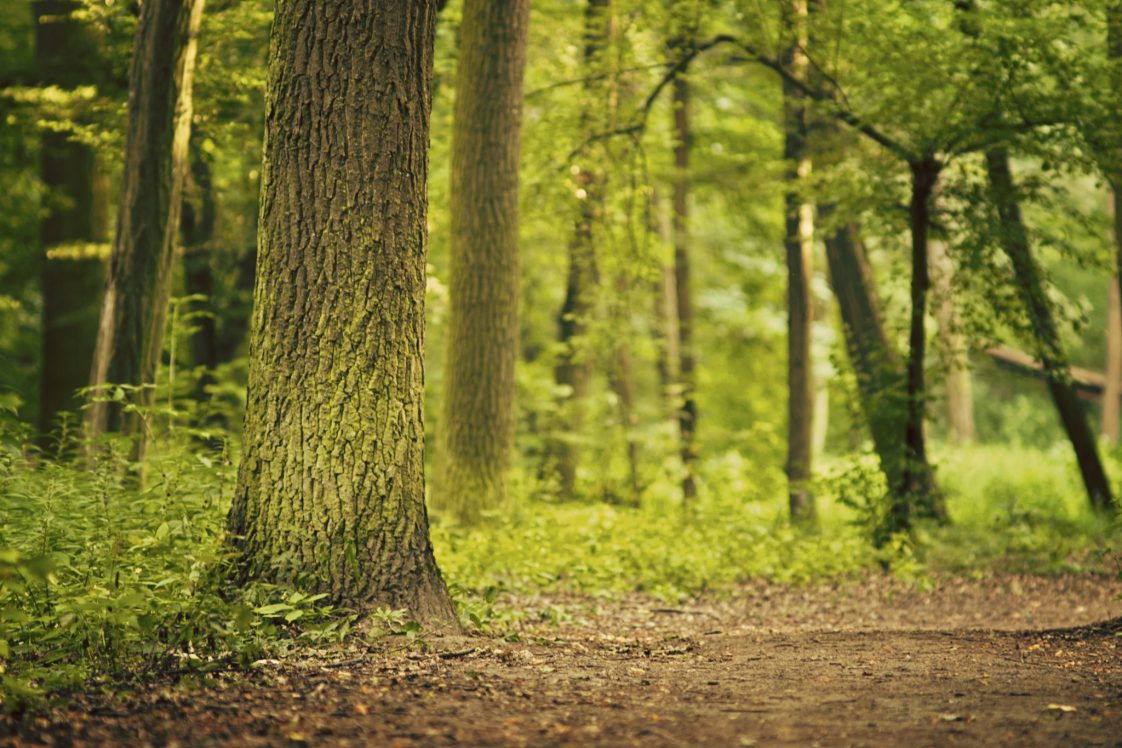Emergency Handbook

Failing trees cause the most damage and inconvenience both during and after a storm event. Trees fail in storms because they endure stresses that exceed their ability to withstand. The weight of a falling branch, trunk, or whole tree is massive and will easily damage people and property.
Proactive Tree Management
Proactive management of your trees ensures you have less to worry about from any storm or falling tree at any time.
Trees need to be pruned for their strongest shape.
Young Trees
- Maintain a single trunk from ground to tip.
- Keep branches evenly spaced up the trunk.
- Make sure branches attach to the trunk at wide angles not narrow.
Mature Trees
- Clear the canopy of dead branches greater than an inch in diameter.
- Maintain the single leading trunk as long as possible.
- Prune often to ensure all pruning is done to young branches not old ones.
Assess mature trees for structural integrity and health. Looking for structural problems in your trees is called tree risk assessment.
Discover if the tree has targets it may strike if it or a part of it falls. If there is a target, can the target be moved? If the target can’t be moved, can the tree be made safe?
If you find a problem, hire a professional arborist to advise you.
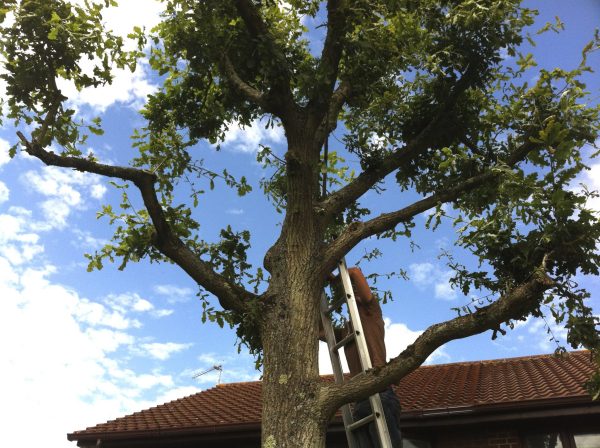
During a Storm
Tree management during a storm is almost nonexistent. If you feel that a tree presents you with danger during a storm, avoid the target zone of the tree. The target zone is any place that the tree or any part of it may strike if it falls. This can mean your home if the tree stands near enough. For safety, evacuate the part of the home the tree stands over.
Post-Storm Cleanup
After a major storm in which trees have broken, the cleanup of tree debris is usually the first problem. Trees will likely block roads and cause broken electrical and communications lines.
Before starting cleanup, ensure no tree or parts of trees you may touch are in contact with utility wires. If there are wires present, retreat at least 10 feet from them and call the utility company.
Always work with a partner.
Always wear a helmet, safety glasses or goggles, cut-resistant gloves, and chain saw chaps when operating a chain saw.
Renovating Storm-Damaged Trees
Not all trees will be completely destroyed by a storm. It is important to select trees that will recover and still be beautiful and safe. It is sometimes possible to rescue a badly damaged tree; however, get an assessment from a professional arborist before attempting this.
When considering keeping storm-damaged trees, examine the major tree parts:
Roots: If you see any of the following problems, removal of the tree is recommended.
- soil raised into a hump on one side of the tree, particularly if the tree is leaning
- broken roots raised up out of the soil, particularly under the tree’s canopy
- broken or cracked root flare at the base of the tree’s trunk
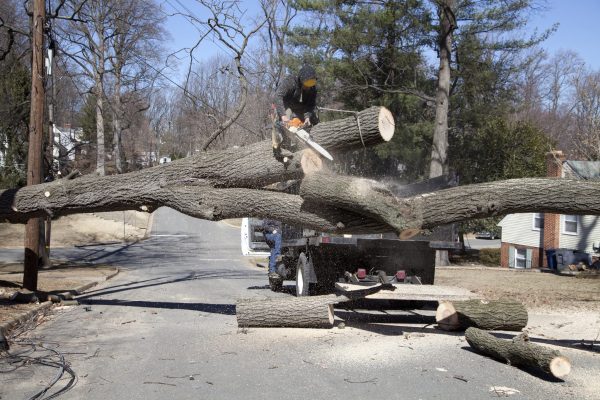
Trunk: The following problems should be considered a cause for removal of the tree.
- broken trunk, especially mature trees
- vertical cracks, often an indication that the tree is twisted
- horizontal cracks indicating tree has broken but not fallen down
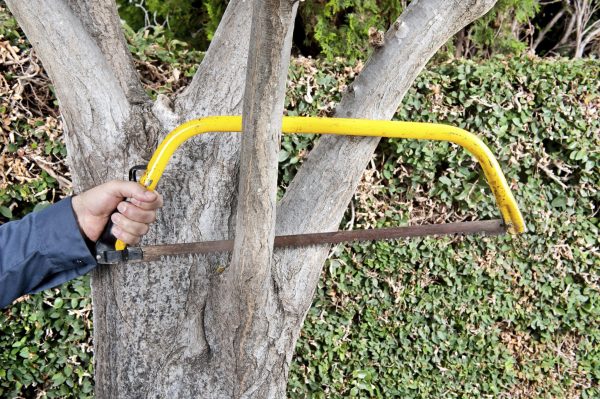
Branches: Remove the tree if more than half the canopy is broken or missing.
For trees you decide to keep, renovation pruning will be needed
to ensure the tree can heal as quickly as possible.
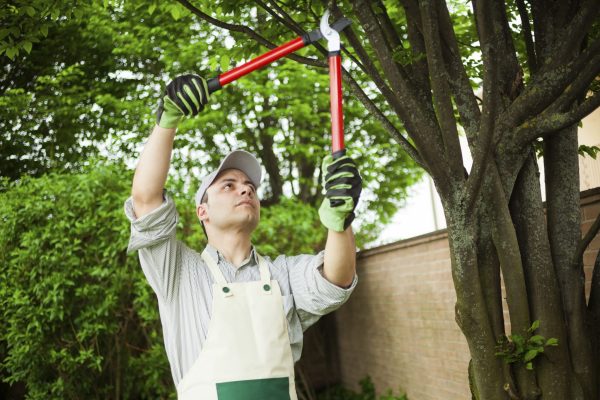
Hiring an Arborist
After a storm, it is advisable to hire a professional arborist to help repair and remove damaged trees. For quality work, always hire qualified arborists with the latest information and techniques. Trees are living and also need a professional eye. When contracting an arborist, look for the following qualifications and information to be provided:
- proof that he or she is bonded
- proof that he or she is insured
- list of references
- detailed work plan and cost estimate in writing
- expected dates of work
- proof that he or she is an International Society of Arboriculture (ISA) Certified Arborist
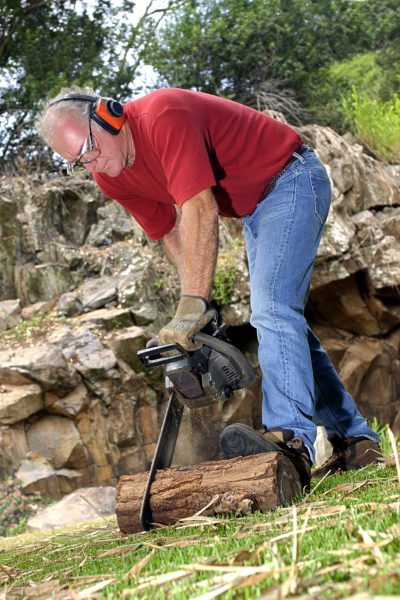
Use pesticides only according to the directions on the label. Follow all directions, precautions, and restrictions that are listed. Do not use pesticides on plants that are not listed on the label. Trade and brand names used are given for information purposes only. No guarantee, endorsement, or discrimination among comparable products is intended or implied by the Alabama Cooperative Extension System. This publication is for information purposes only and should not be a substitute for recommendations or treatment by a health care provider.

